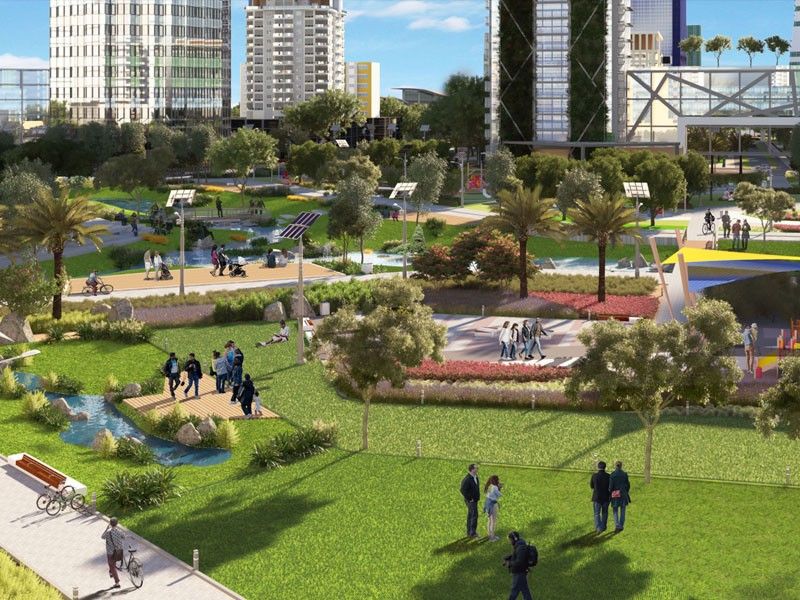Filling in the employment gap for economic progress

Rapid urbanization is a defining phenomenon that presents cities with opportunities for economic growth. The relationship between urbanization and economic growth, however, is not always linear. In developing countries such as the Philippines, while urbanization occurs at a rapid pace, it is often accompanied by surging populations, high traffic congestion, and the alarming disparity of economic opportunities, such as the lack of income opportunities, among the urban poor.
In the National Capital Region alone, 2021 data from the Philippines Statistical Authority show that the population is estimated at 14.1 million, and yet around 400,000 people are jobless. As the country’s main economic hub, there is clearly a need to spur economic growth through investments that provide new jobs and opportunities, support small and medium local businesses that form the lifeblood of the economy, and spur citizen productivity. But in a highly congested city with a limited labor market, how does one create a sustainable employment ecosystem?
The answer may lie in how cities are built, inhabited and cared for. Faulty or inadequate city governance and planning can worsen problems such as socioeconomic disparities and rising unemployment rates, while well-planned, compact and connected cities can increase productivity, boost competitiveness and efficiency, and ultimately improve livability through improved housing, transport and employment.
This very concept of well-planned cities is found in smart cities that take a citizen-centric design approach by using data and technology to provide services and solve city problems. A smart city promotes sustainable living, harnesses technology, makes transportation and social services accessible with walkable districts, and improves social and economic quality through a sustainable economy.
To see how a smart city can usher economic growth and employment, consider neighboring countries such as Singapore, which has been hailed by the Smart City Index as the smartest city in the world. For the Lion City of Asia, technology and smart mobility initiatives take on a key role. Given the country’s size being significantly smaller in comparison to other nations — 417 times smaller than the Philippines even — Singapore’s city leaders have proactively built and executed smart and connected traffic solutions. By placing strict policies discouraging car ownership and implementing smart mobility solutions, Singapore was able to curb traffic congestion and maximize public transit networks to foster mobility.
Now take into consideration India, whose population density far exceeds Philippines, but shares the same struggle of poverty among its people. India, like Singapore, has its own Smart Cities Mission that seeks to improve the quality of life in 100 cities and towns of India. Smart cities such as the City of Nagpur and Chennai are only a few examples of highly urbanized cities that boost the India’s GDP (gross domestic product) through what they call new-age employment opportunities. For these cities, smart evolved technology is optimized for local area development, which simply means that technology, information and data used to improve local services from healthcare to transport to education. This opens windows of new skills and employment opportunities in the areas of ICT (Information Communication Technology), Data Management & Analytics and e-Governance.
Meanwhile, countries even more similar to the Philippines such as Malaysia are not too far behind in their smart city journey. Related pain points such as traffic congestion, pollution and rapid urbanization have also plagued the country. Yet its populous capital city, Kuala Lumpur, has made significant strides in Malaysia’s digital transformation that the Greater Kuala Lumpur (KL) is recognized as one of the 12 National Key Economic Areas of the Economic Transformation Program (ETP) by the Malaysian government. To date, the country continues to invest in technology, urban farming and education to create their own blueprint for sustainable smart cities in the future.
While some may think that such an endeavor would be difficult to achieve in a country such as the Philippines, it is not impossible. From a development standpoint, cities are a nexus of prosperity and job creation. The Philippines ecosystem allows for a clean slate to build on or expand, and with a blank slate to start on, common problems like traffic congestion and limited accessibility are resolved early on through smart city design similar to how Singapore manages its well-known transport network.
But the bigger eye-opener is the mountain of economic opportunities to follow once a smart city is built. Smart cities will bring in new businesses, livelihoods and careers like in the case of India. Like all cities, manpower will be needed to govern and drive public service, employees will be needed to fill buildings, schools and hospitals, while neighborhoods need to have families. This could account for thousands of jobs at a crucial time when unemployment levels are rising as a result of the economic effects of the pandemic.
It is time that cities in the country live up to their full potential of capacitating all Filipinos and not just the privileged few. After all, cities are not just mere strategy on paper but the effective implementation of strategic actions that seek to improve the quality of life. Indeed, when we set to build inclusive cities, we are also creating societies and communities that can be in the driving seat to attain the goals and benefits of shared economic prosperity.
- Latest
























